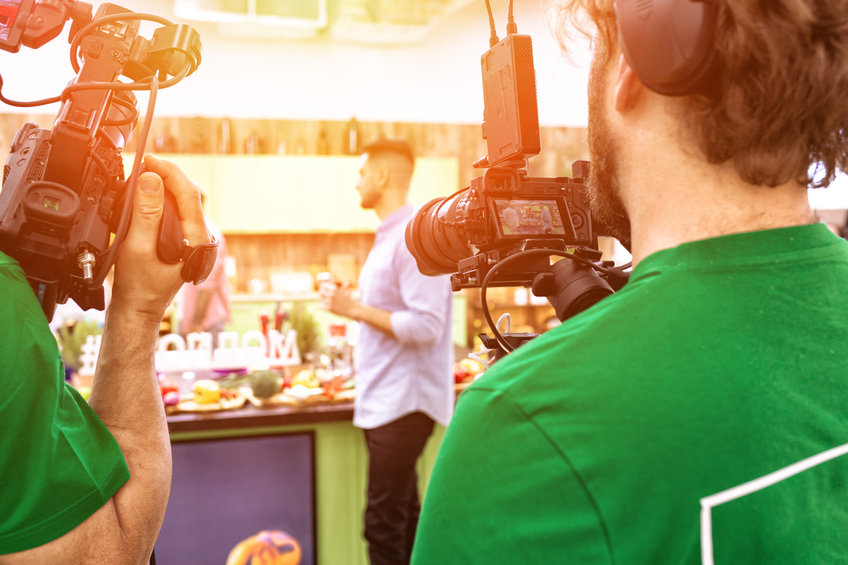One of the most important things to consider in filmmaking is how you will light your scene. Different lighting styles can dramatically change the tone of a project, and understanding how to control light properly is integral to conveying the right emotion.
In many instances, the best lighting style will be high-key lighting. But what is the definition of high-key lighting exactly?
High-key lighting is low contrast, bright, and full of lightning. The meaning of high-key lighting is to create or suggest a happy, upbeat, and safe environment. High-key lighting is often the go-to style for classic films, YouTube videos, and sitcoms.
This article will discuss what qualifies lighting as ‘high key,’ when and where to use it, and how to create this style for any projects you may be working on.
Not only will this be a useful skill, but knowing how to add and remove lights from your setup to match a variety of tones will massively improve the quality of your work.
What Is High Key Lighting?
As stated above, high-key lighting is bright, upbeat, and full. It eliminates as much contrast as possible, minimizes shadows, and ensures that no aspect of your shot is underexposed.
The term ‘high key’ refers to the main light used in a lighting setup, commonly called the ‘key light.’ In high-key lighting, this light is far more powerful than the rest. Because of this, fewer shadows are present, and the subject is evenly and well-lit.
There are plenty of benefits to this. For one, most of your shots will be exposed instead of darker, more dramatic, low-key lighting situations. The origin of high key lighting was due to technological limitations with older cameras.
Nowadays, high-key lighting is a common stylistic choice. Illuminating all of your subjects and exposing the full frame gives an air of comfort. No dark shadows lurk in the background; brighter and less harsh images are generally more happy and comforting.
When And Where To Use It?

The primary benefit of high-key lighting is conveying a sense of comfort and a known space. Understanding this impact will help inform your decision on whether to use it.
Many beginner filmmakers believe they must use high-key, three-point lighting on every set. Three-point lighting refers to having a key light, fill light and backlight, and while this ensures you will have a properly exposed image, it fails to acknowledge the tone of a scene.
As much as the set and cinematography inform the story, so does the lighting.
Therefore, high-key lighting is your best bet in lighthearted, comedic, or comforting settings. If you’re filming a commercial, high-key lighting is also a great choice because it will make the product and setting appear more familiar.
Other common applications of high-key lighting include YouTube videos.
The ring lights that are so common among YouTubers and influencers function as a key light to illuminate their entire face evenly. They match their lighting to their videos’ tone, be it comedy, vlogs, commentary, or make up.
Remember that matching your lighting to your scene is essential and that none of these suggestions are rules. You must find a happy medium if you’re filming a comedic scene at night or somewhere where a strong key light wouldn’t make sense.
Lighting is an artistic choice, and it’s up to you to determine how you will implement it. Paying attention to lighting styles in film and TV and recognizing their effect is a great start to understanding what lighting styles you should use in your projects.
How To Create High-Key Lighting
High-key lighting isn’t complicated to create. However, understanding lighting setups is far more visual than a written article allows. Because of this, we’ve included three great tutorials on high-key lighting and how to achieve it yourself.
1. Understanding High Key Lighting – PremiumBeat
This video briefly defines high-key lighting and some stills from various films and TV shows as examples.
From there, you will receive a description of how to get proper lighting in your house. This is especially helpful if you use a window as your key light source.
Chances are, if you’re an independent filmmaker working on a small budget, you won’t have all the lighting resources in this video.
However, because each light and its purpose is explained, plenty can be learned and applied no matter your circumstances.
2. High-Key Narrative Lighting – Aperture
Aperture is another consistently dependable source for filmmaking information, and luckily for us, they have a tutorial on high-key lighting for narrative productions. Don’t let the title fool you, though. These fundamentals can be applied in a variety of settings.
Much like the PremiumBeat video, a brief overview of high-key lighting is provided before getting into the details of how to achieve it. This video excels in its explanation of practicals and motivating lighting sources.
Practical lights are lights that you can see in the frame. This could be a lamp, a TV screen, or a fire. Often, they do not function to light a space fully, but they can help make the lighting seem more realistic or add depth to the shot.
This is also where having motivated sources of lighting comes into play. Don’t just throw a bright light into a scene for exposure. If you’re by a window, it’s good to have light coming from that direction. The same goes if you’re under a street lamp or by any other strong light source.
This tutorial will be worthwhile if you want realistic, motivated lighting. Especially for narrative filmmakers, it’s important to understand how to get practical lights to work for you and integrate natural light sources.
3. High Key Portraits – Adorama
Our third and final recommendation for a high-key lighting tutorial comes from the camera and gear supplier Adorama. While this tutorial focuses on high-key lighting for photography, the principles remain the same.
This tutorial is beneficial with its use of diagrams. Furthermore, high-key lighting in a photography studio setting can often resemble corporate and promotional videos.
Adorama’s tutorial also includes editing tips for achieving great, high-key results in photography. Because this is done in Photoshop, it will not be directly applicable to film and video, but understanding the effects contrast, saturation, and sharpness can have on the result is helpful.
If you’re editing and coloring your video, you must remember that decisions made in post can affect how the lighting is perceived. Increasing contrast too much or bringing out too much color can negate some of the decisions made on set.
Therefore, it’s important to have a clear vision and communicate this to everyone involved throughout the project. Consistency is key; you must know when to commit to your decisions.
Conclusion
Now that you understand high-key lighting, you can light most scenes properly. Even if you don’t have lighting gear, you can achieve similar results by using the sun as a key light and filling your background with practicals.
Understanding the reasons behind lighting setups is as important (if not more) as understanding the setup itself. Once you know the purpose and function of each light, you can achieve similar results without much equipment.
Something that cannot be understated is the importance of motivated lighting. When you prepare a scene to film, it’s important to ask yourself, “What are all the sources of light in this world?”
Of course, you can get away with some things if the whole room or location isn’t revealed, but it is important to consider how light interacts with your subjects.
One of the most common failings I’ve seen in low-budget films is a poorly placed reflector or key light coming from the wrong side. While lighting your subject’s whole face can be important, sometimes you may have to make concessions.
Are you excited to try a new lighting setup? Are there other lighting topics you’d like us to cover in a future article? Let us know in the comment section below, and good luck next time you use high-key lighting!

